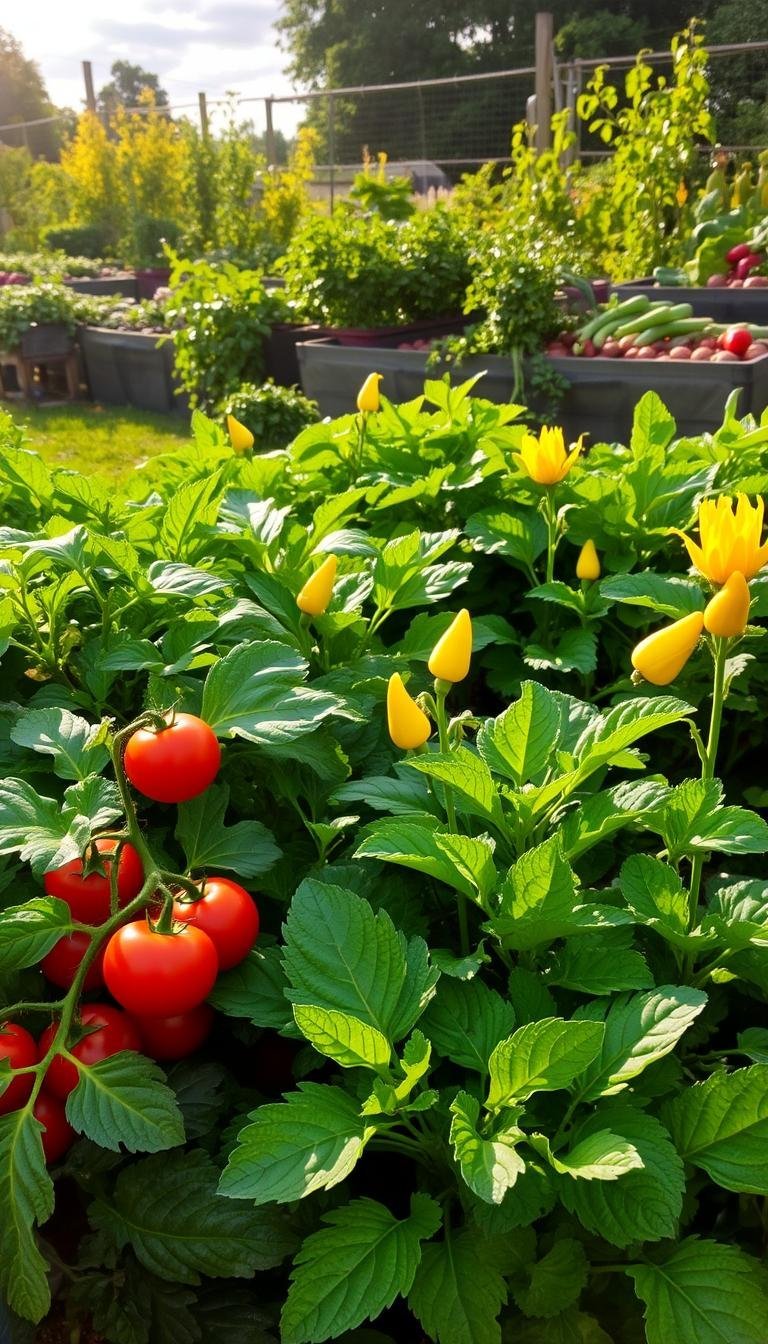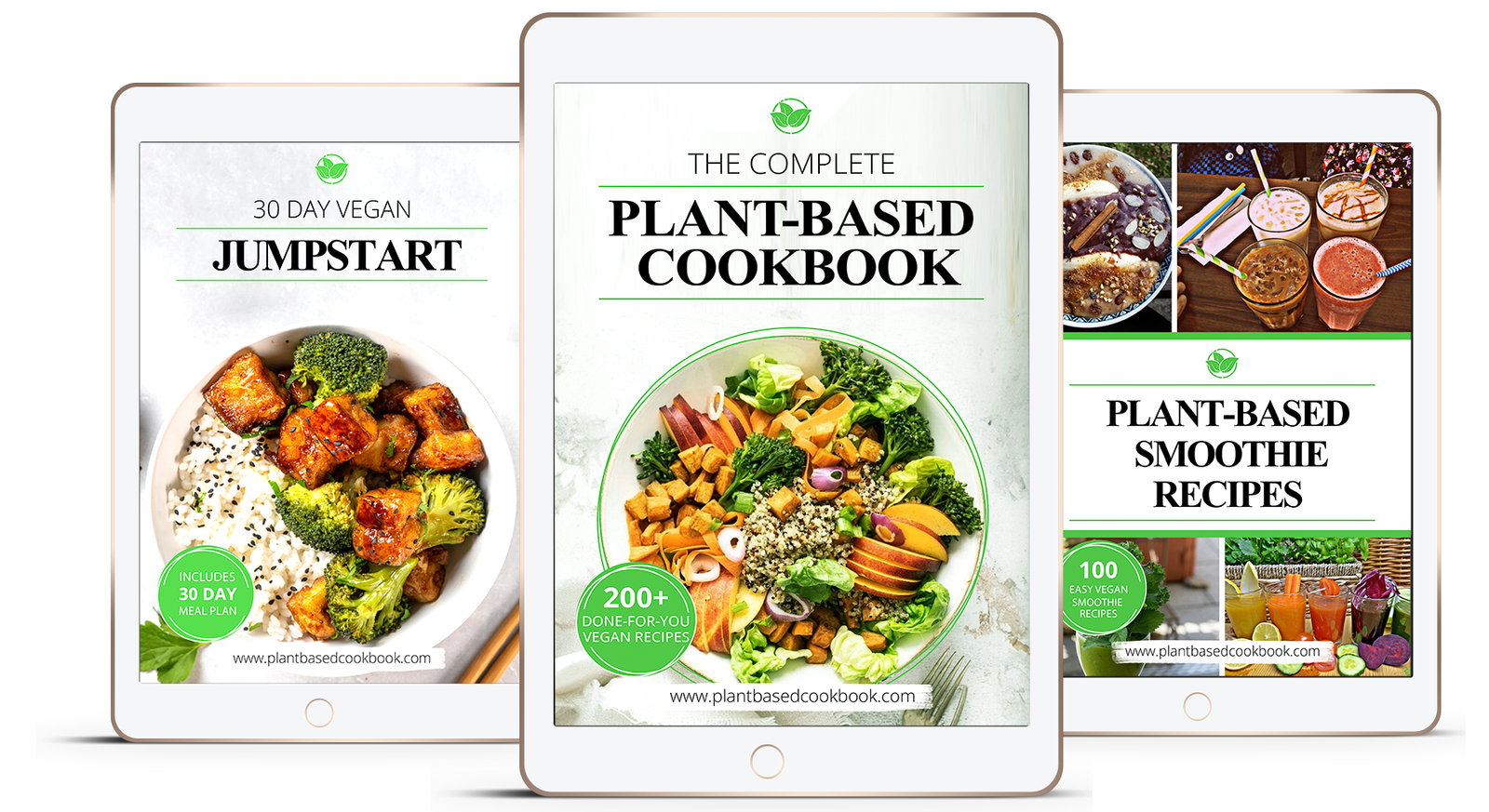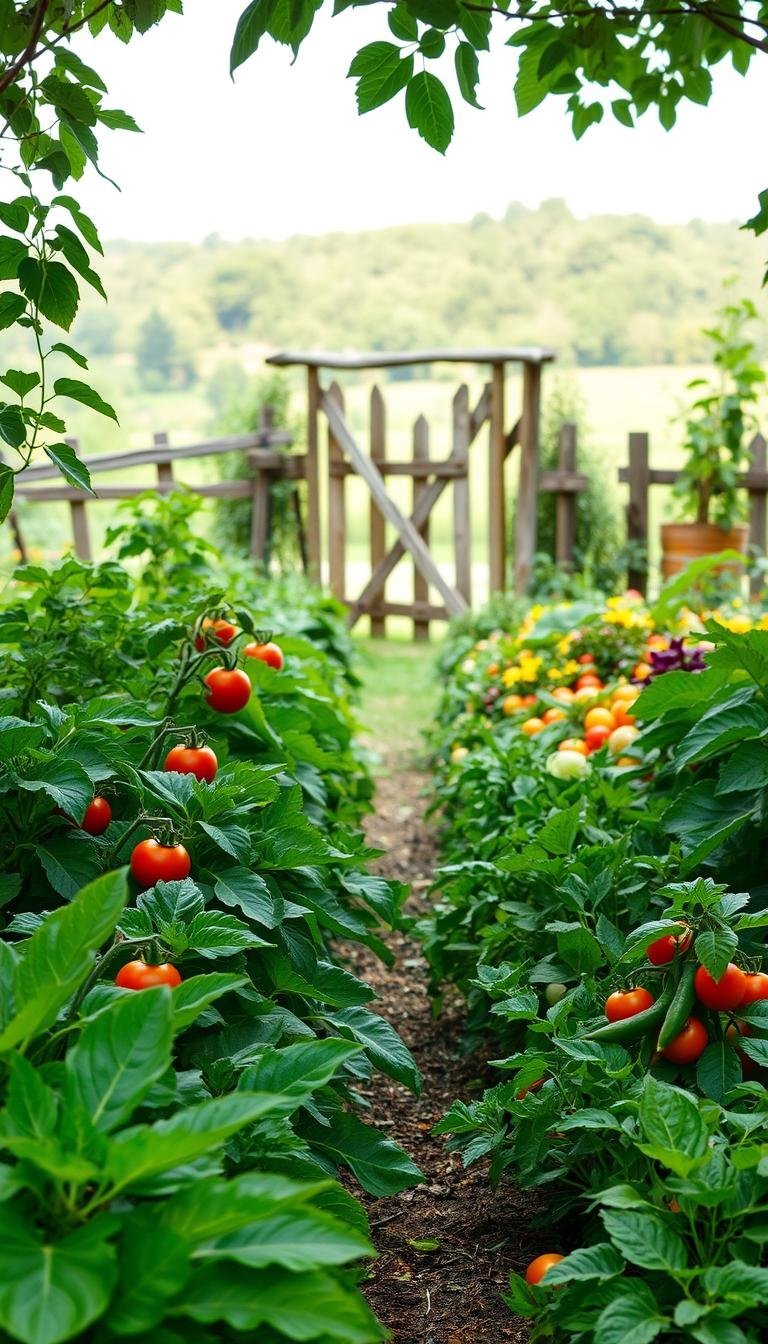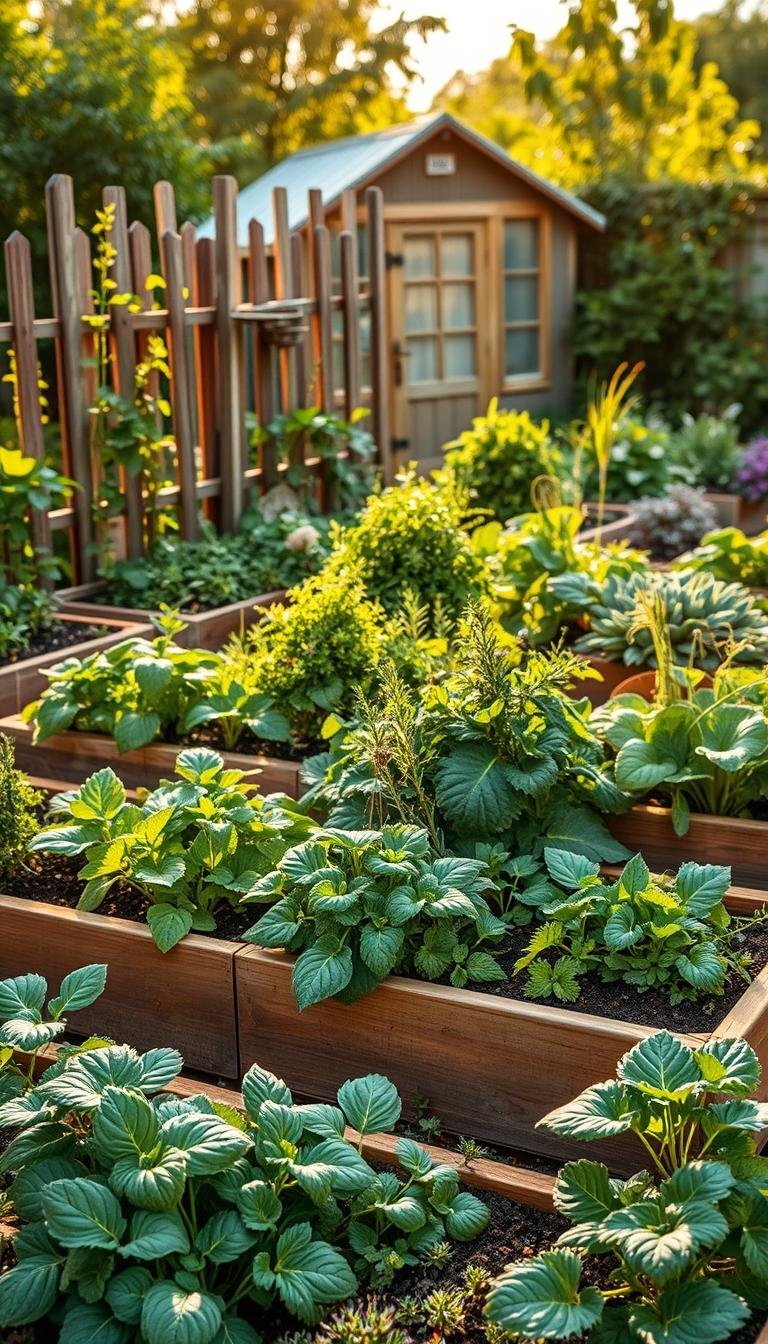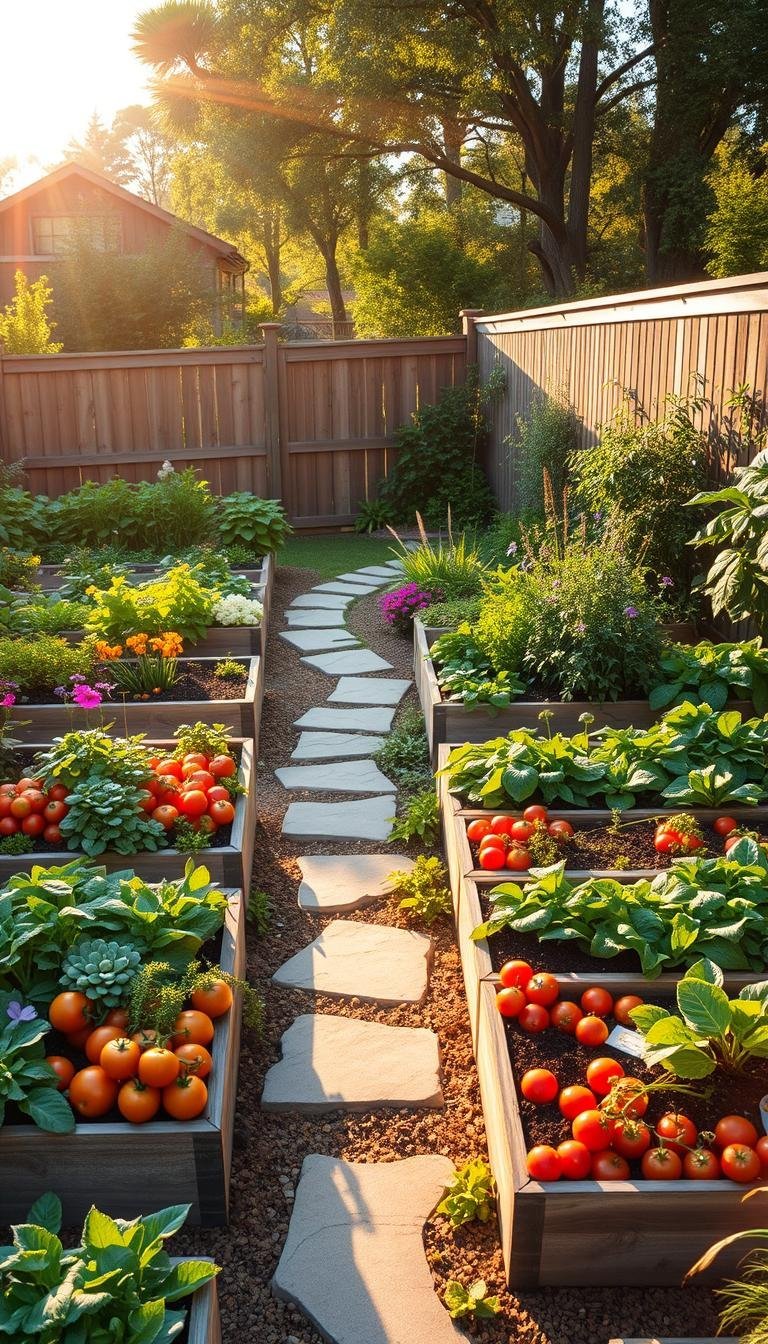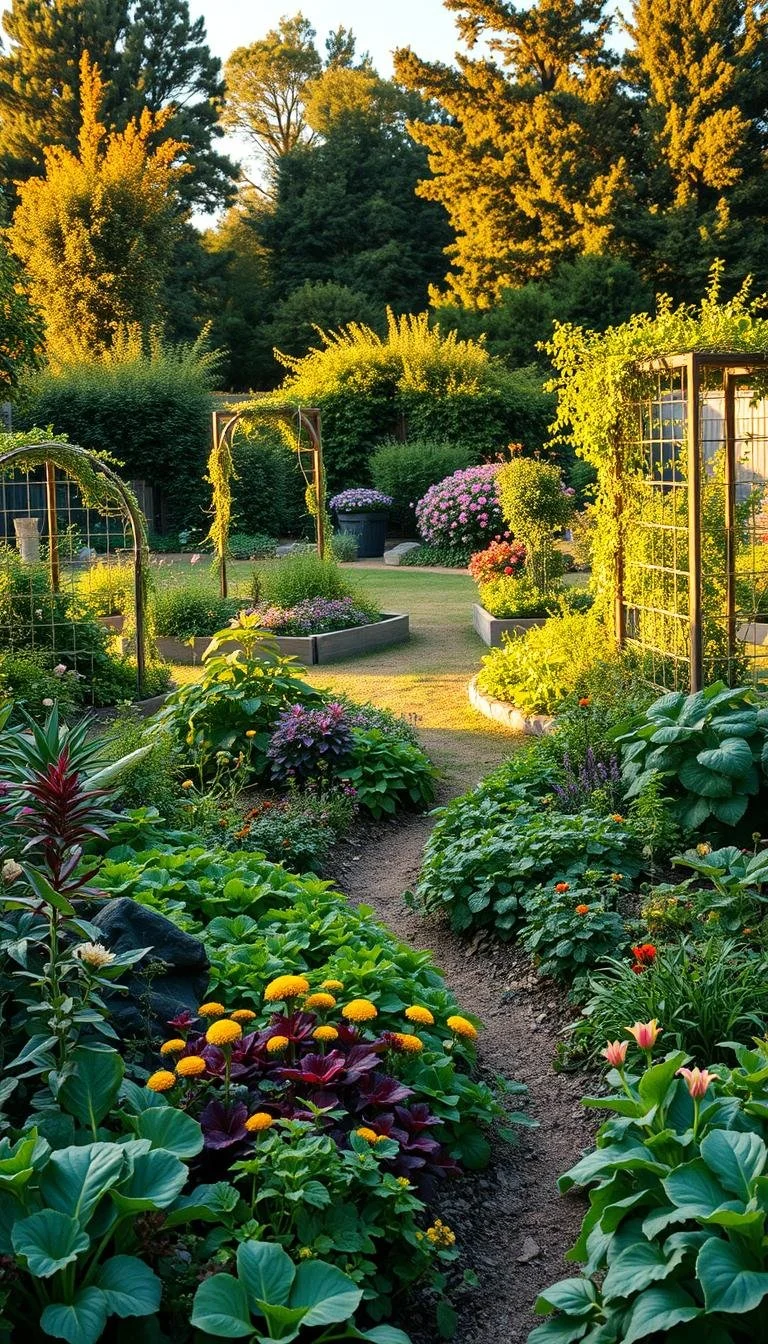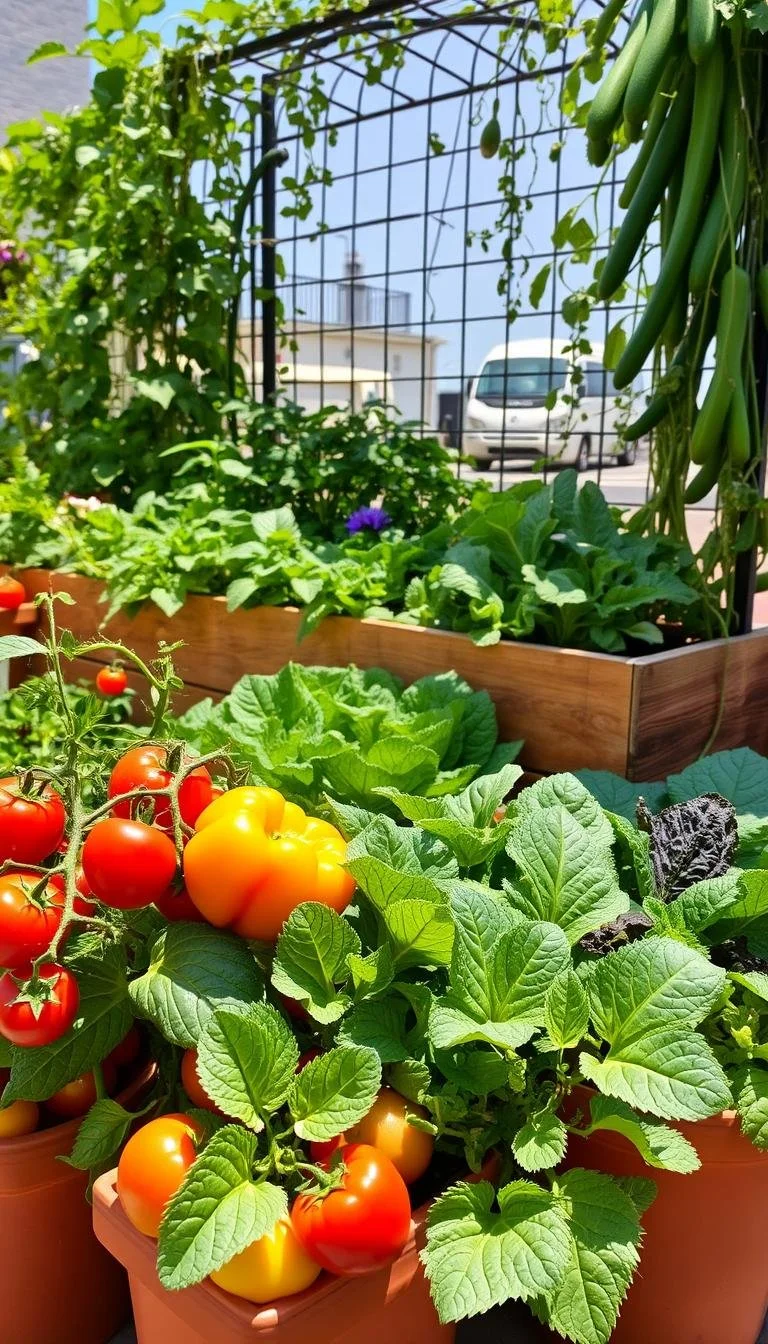(Hey! Some links in this post may be affiliate links — meaning I may earn a small commission if you buy through them, at no extra cost to you. As an Amazon Associate, I earn from qualifying purchases. I only share products I genuinely love and think you’ll find useful too. Read the full disclosure here).
Gardening doesn’t have to be hard. Growing easy vegetables at home is fun and rewarding. You can enjoy fresh produce from your backyard or balcony. These plants need basic care and can grow in small spaces.
This guide is for beginners. It shows which vegetables grow fast, need little space, and fit your climate. You’ll learn how to save money, eat healthier, and connect with nature. It also helps you avoid common mistakes.
🌿 Want to Take Your Garden to the Next Level?
If you're serious about growing your own food and becoming more self-reliant, The Self-Sufficient Backyard is a must-read...
🌱 Learn MoreContents
- 1 Why Grow Vegetables at Home?
- 2 Choosing the Right Vegetables for Your Space
- 3 Best Easy Vegetables for Container Gardening
- 4 Soil and Fertilizer Basics
- 5 Essential Gardening Tools for Success
- 6 Planting Times for Seasonal Vegetables
- 7 Caring for Your Vegetable Garden
- 8 Harvesting Techniques for Your Vegetables
- 9 Preserving Your Harvest at Home
- 10 Troubleshooting Common Vegetable Problems
- 11 Seasonal Gardening Tips for Success
- 12 Joining a Local Gardening Community
Why Grow Vegetables at Home?
Gardening turns fresh ingredients into nourishment and joy. Every bite of a homegrown tomato or crisp lettuce leaf gives you vitamins and flavors lost in store-bought options. This process sparks creativity for healthy vegetable dishes and vegetable meal ideas that your family will love.
Health Benefits of Homegrown Vegetables
Vegetables picked straight from the garden are packed with nutrients. Nutrient-rich greens like spinach or kale, when picked fresh, keep more vitamins than produce shipped far away. Use these nutrients to make healthy vegetable dishes, like stir-fries or salads, that are full of flavor and good for you.
Economic Advantages
- A single tomato plant can yield 10–20 lbs of fruit, saving up to $50 yearly vs. store prices.
- Free seeds from heirloom varieties cut costs further.
Grow ingredients for vegetable meal ideas like soups or salsas to cut down on grocery bills and enjoy homemade flavors.
Environmental Impact
“Home gardens cut food miles by eliminating transport emissions.”
Local harvesting avoids plastic packaging and fossil fuels used in long-distance shipping. Composting garden waste creates free fertilizer, closing the sustainability loop.
Every harvest is a step toward better health, savings, and eco-friendly living. Start small with herbs or leafy greens to see quick results and try out healthy vegetable dishes tonight!
Choosing the Right Vegetables for Your Space
Starting a vegetable garden? The first step is picking easy vegetables that thrive in your environment. Whether you have a backyard or a balcony, the right choices ensure success. Let’s explore how to match plants to your space and climate.
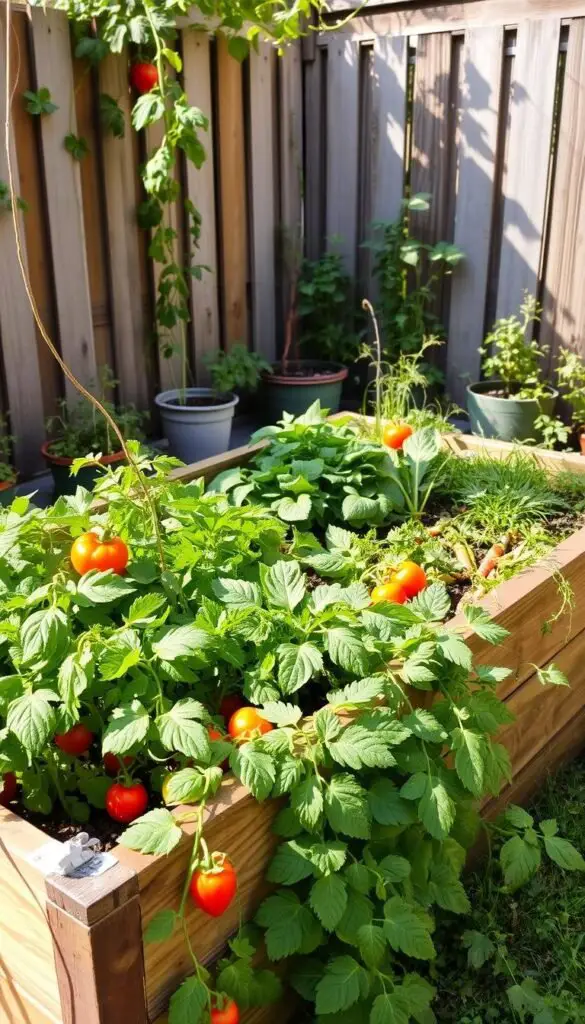
Factors to Consider: Climate and Space
- Climate zones: Check USDA hardiness zones for your region. Most easy vegetables like tomatoes or lettuce adapt to specific temperatures.
- Space: Small spaces? Opt for compact varieties. Containers work for herbs, peppers, or strawberries. Larger areas allow sprawling plants like zucchini.
- Light: Full sun (6+ hours daily) suits tomatoes and beans. Shadier spots? Try leafy greens like spinach.
Popular Options for Beginners
Start with these reliable choices:
- Radishes: Grow in 3-4 weeks in loose soil. Perfect for salads or easy veggie dishes like fresh salsas.
- Green beans: Bush varieties save space. Add to stir-fries or enjoy raw as a crunchy snack.
- Zucchini: Yields plenty in warm climates. Use in zucchini bread or grilled dishes.
- Herbs: Basil, cilantro, and parsley thrive in pots. Enhance flavors in pasta, soups, or homemade dips.
“Growing vegetables isn’t just about planting—it’s about pairing plants with your world.”
Match these easy vegetables to your setup, and soon you’ll be enjoying homegrown ingredients in your favorite easy veggie dishes. Happy gardening!
Best Easy Vegetables for Container Gardening
Container gardening makes small spaces into lush vegetable gardens. Tomatoes, lettuce, and peppers grow well in pots. They bring fresh flavors to your meals and inspire new recipes.
Tomatoes: Fresh and Flavorful
Compact tomatoes like Cherry or Roma do great in 5–10 gallon pots. Make sure your pots have holes for drainage and add compost to the soil. As tomatoes grow, use stakes to support them.
Tip: Slice ripe tomatoes with fresh basil and mozzarella for a quick summer side dish.
Lettuce: Crisp and Nutritious
- Grow in shallow containers (6–8 inches deep) for leafy greens.
- Plant every 2–3 weeks for continuous harvests.
- Try heat-tolerant types like buttercrunch> or Buttercrunch.
Create crisp salads with mixed lettuces and a light vinaigrette. It’s perfect for light meals or vegetable recipe inspiration.
Peppers: Colorful and Versatile
Compact pepper varieties like Jalapeño or Mini Bell fit 5-gallon pots. Water deeply when the soil feels dry 1 inch below the surface. Use organic fertilizer monthly.
Roast sweet peppers with olive oil and herbs, or slice them into stir-fries for bold flavors. Hot peppers add zing to salsas or marinades.
Soil and Fertilizer Basics
Healthy soil and the right fertilizers are key to a great vegetable garden. Even beginners can make their plants thrive. This means your homegrown veggies will taste amazing in beginner-friendly vegetable cooking dishes.
Now, let’s talk about soil types. Most gardeners fall into one of three categories:
- Clay soil: It’s dense and full of nutrients but drains slowly. Adding compost helps it drain better.
- Sandy soil: It’s light and drains fast but loses nutrients quickly. Mixing in aged manure helps keep nutrients.
- Loamy soil: It’s just right—drains well and is full of nutrients. Test your soil’s pH level with a kit to adjust as needed.
“Good soil isn’t just dirt—it’s the foundation of flavor.” – Organic Gardening Association

When picking fertilizers, think about what you want. Beginner-friendly vegetable cooking needs fresh, vibrant ingredients. Healthy soil is essential for this. Organic fertilizers like compost or worm castings improve soil over time but take patience. Synthetic fertilizers work fast but might harm the soil’s balance. A mix of both is often best: start with organic and use synthetic for quick fixes.
Healthy soil doesn’t just grow veggies. It grows ingredients that taste better in simple dishes. Test your soil every year and adjust as needed. Your future stir-fries and soups will be delicious.
Essential Gardening Tools for Success
Choosing the right tools makes gardening a fun hobby. Good equipment keeps plants healthy and ensures a big harvest. This means you can enjoy your veggies with little prep.
Must-Have Tools for Beginners
- Hand trowel: Perfect for moving plants and getting rid of weeds. Choose ones with Wilton ergonomic handles for comfort.
- Bypass pruners: Fiskars pruners cut well without harming the plant. Clean them with alcohol to stop rust.
- Watering can or hose: A 3-gallon plastic can is great for small gardens. Gardener’s Supply Co. offers soaker hoses that save water.
- Gardening gloves: Use heavy-duty cotton gloves from WorkGlovesUSA to protect against thorns and dirt.
Optional Tools to Consider
- Soil blockers: The Burpee Soil Blocker makes seedling pots, helping plants adjust better.
- Irrigation timers: Rain Bird timers set watering schedules for you, saving time.
- Harvesting shears: Felco bypass shears make clean cuts on thick stems without hurting the plant.
Begin with the basics and add more as your garden grows. The right tools mean healthier plants and fresh produce. Over time, get more tools to make gardening easier.
Planting Times for Seasonal Vegetables
Timing is everything when growing vegetables. Knowing when to plant ensures your garden thrives. It also helps you plan meals around your harvest. Pair fresh produce with fast vegetable recipes for quick, healthy meals all year.
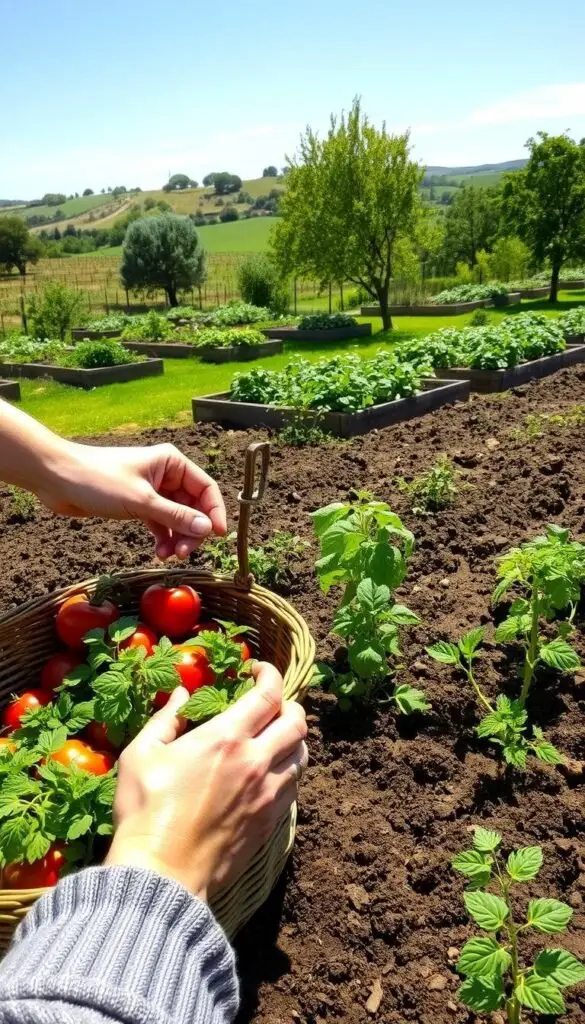
Cool-Season Vegetables
- Peas: Plant 4–6 weeks before last frost. Thrive in soil 45–55°F. Use frost blankets for cold nights.
- Kale: Sow seeds early spring. Tolerates light frost; grows best in cooler weather.
- Broccoli: Start seeds 8 weeks before last frost. Plant in early spring or late summer for two harvests.
- Carrots: Direct-sow in early spring. Soil temps 50–75°F. Harvest when roots are full-sized.
Warm-Season Vegetables
- Tomatoes: Wait until soil hits 60°F after last frost. Mulch to retain heat and moisture.
- Cucumbers: Plant seeds when soil warms to 70°F. Grow vertically to save space and boost yield.
- Corn: Sow after all frost danger passes. Space plants 12–18 inches apart for airflow.
- Squash: Direct-sow 2–3 weeks after last frost. Protect from pests with row covers.
Use USDA zone guides to adjust planting dates. Succession planting every 2–3 weeks extends harvests. Turn fresh veggies into fast vegetable recipes like stir-fried greens or zucchini frittatas. Check regional calendars for your area’s frost dates and optimize your meals around what’s ripe.
Caring for Your Vegetable Garden
Healthy plants need regular care. Follow these tips to keep your garden thriving. This way, it will be ready for quick and easy vegetable recipes.
Watering Guidelines
Water deeply but don’t overdo it. Signs of thirst include wilted leaves. Too much water makes soil soggy.
Water early morning or late afternoon to reduce evaporation. Use drip irrigation or soaker hoses to target roots and save water.
Pest Control Tips
- Plant marigolds or basil to deter insects naturally.
- Check leaves weekly for aphids or spider mites.
- Use neem oil or insecticidal soap first—chemicals are a last resort.
Healthy plants resist pests better. Once your harvest is ready, enjoy your homegrown veggies. Use them in salads or stir-fries—perfect for those quick and easy vegetable recipes. A little effort now ensures a flavorful payoff later!
Harvesting Techniques for Your Vegetables
Knowing when and how to harvest your vegetables is key. It makes them taste better and keeps their nutrients. The right timing and method turn your garden’s harvest into healthy vegetable dishes that impress everyone.
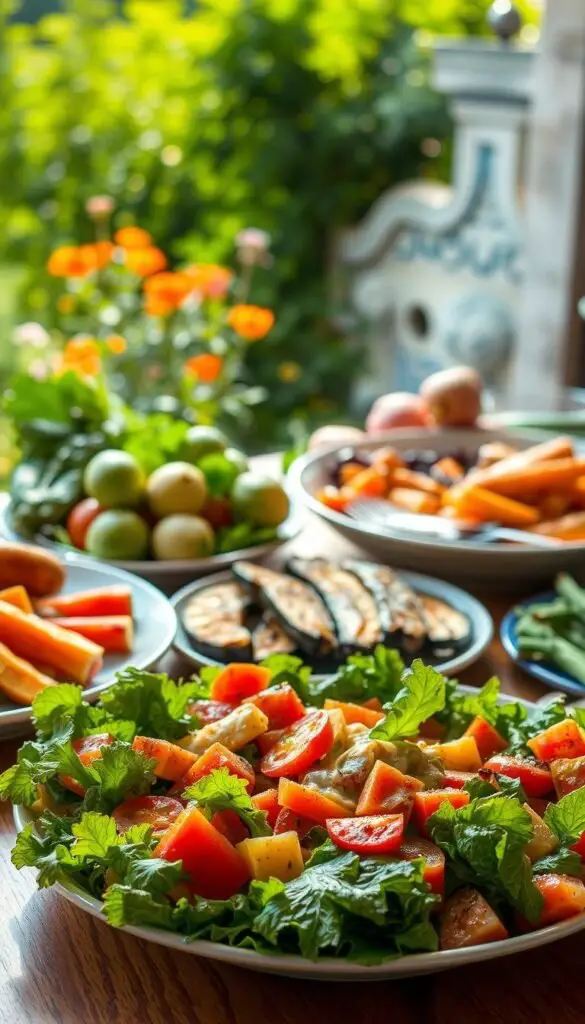
Timing: When to Harvest
Look for these signs to pick at the best time:
- Color: Tomatoes should be fully red or orange, peppers should be deep in color.
- Size: Lettuce leaves should be 6–8 inches long; beans should be plump but crisp.
- Days to Maturity: Check the seed packet for the right time. Picking too early or too late can make veggies taste bad.
Picking too soon can mean underdeveloped veggies. Waiting too long can make them lose flavor. The best time to pick is when they’re at their peak, perfect for salads or stir-fries.
How to Harvest Without Damaging Plants
Use sharp shears or your hands to avoid harming the plants:
- Snip leafy greens like lettuce close to the stem base.
- Twist tomatoes gently until they snap free.
- Cut root veggies like carrots at soil level, leaving greens attached to keep them fresh longer.
Harvest in cool mornings to keep your veggies crisp. Store them in a cool place or refrigerate them quickly to keep their nutrients for healthy vegetable dishes.
Harvesting your veggies right makes them taste better and last longer. Your hard work means every bite of homegrown food is full of flavor and nutrition!
Preserving Your Harvest at Home
Make your garden’s bounty last all year with simple ways to preserve. You can can or freeze to keep flavors and nutrients in. It’s easy and effective.
Canning Basics
- Use a water bath canner for high-acid foods like tomatoes or pickles.
- Pressure canners are needed for low-acid veggies like carrots or beans.
- Always follow USDA-approved recipes to ensure safety and quality.
Freezing Vegetables
Blanch veggies like green beans or broccoli in boiling water before freezing. This stops enzymes. Then, pack them in airtight containers, leaving space for expansion. Store at 0°F for the best results.
“Preservation is the ultimate act of gratitude toward your garden’s hard work.” – Organic Gardening Network
Get creative with vegetable recipe inspiration! Canned tomatoes are great in winter soups. Frozen peas add sweetness to stir-fries. Try roasting frozen peppers for homemade salsas or blending canned beets into vibrant smoothies. Check out vegetable recipe inspiration from sites like Ball Brand’s Preserve the Taste for seasonal dishes.
Remember, properly stored preserves can last 12 months. Start small with batches of 3-5 jars to build confidence. Every jar or bag saved is a step toward a self-sustained kitchen.
Troubleshooting Common Vegetable Problems
Even experienced gardeners face setbacks. Spotting issues early keeps plants thriving. Let’s tackle the most frequent challenges and solutions for your easy vegetables garden.
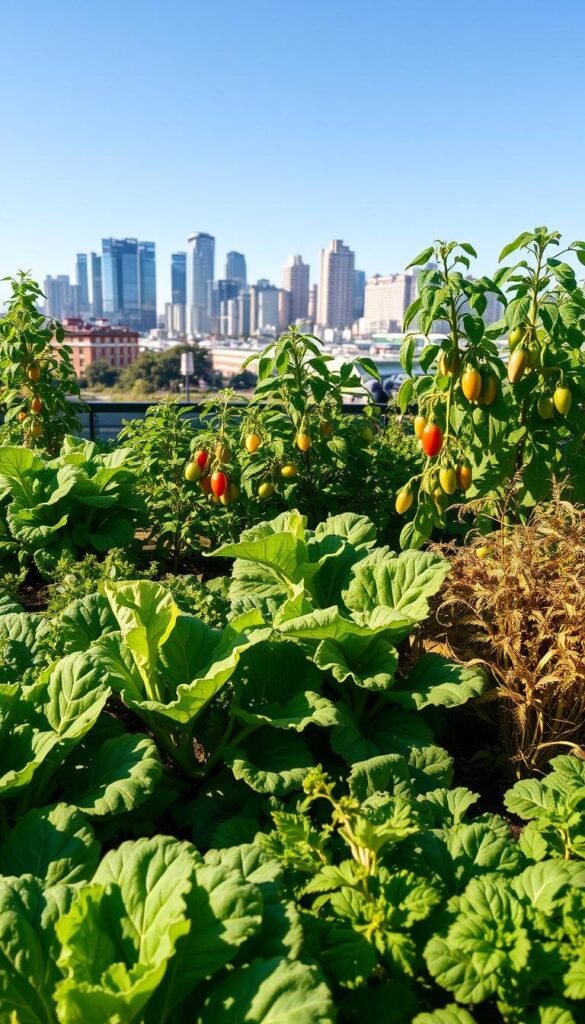
“Gardening is a journey of learning. Every problem solved helps you grow better next time.” – Urban Farmer Network
Identifying Plant Diseases
Common issues include:
- Powdery mildew: White powder on leaves. Treat with milk sprays or sulfur-based fungicides.
- Blight: Brown spots on tomato leaves. Remove affected parts and improve airflow.
- Mosaic virus: Yellow mottling. Remove infected plants to prevent spread.
Fixing Nutrient Deficiencies
Yellow leaves? Stunted growth? Check these fixes:
- Nitrogen deficiency: Leaves turn pale. Add compost or balanced fertilizer.
- Potassium shortage: Edges brown. Use wood ash or potassium-rich feeds.
Prevent problems by rotating crops and mulching. Even easy vegetables like radishes or bush beans can face issues, but quick action keeps gardens healthy. Imperfect produce? Turn slightly blemished zucchini into stir-fries or soups—great vegetable meal ideas! Join local gardening groups for advice. Every challenge is a step toward better harvests.
Seasonal Gardening Tips for Success
Seasonal gardening is more than planting. It’s about working with nature’s cycles. By planning ahead, you can enjoy fresh veggies all year. This makes it easy to make fast vegetable recipes or cook veggies easily all year.
To get your garden ready for winter, start by removing old plants and composting them. Add compost or aged manure to the soil to make it fertile. Plant cover crops like clover or rye to prevent soil erosion and add nutrients.
Don’t forget to clean and store your tools well. Protect plants like herbs or kale with mulch. Winter is also a great time to order seeds and plan your garden for next year.
Preparing Your Garden for Winter
- Clear garden beds of dead plants to reduce pest habitats.
- Add compost or leaf mold to replenish soil nutrients.
- Plant winter cover crops to improve soil structure.
- Mulch perennial plants to shield roots from cold.
Spring Planting Best Practices
As the weather gets warmer, test your soil’s pH levels and fix any nutrient gaps. Harden off seedlings by gradually exposing them to outdoor conditions over a week. Wait for the last frost date to plant.
Use row covers to protect crops from frost. If it rains, cover seedlings to avoid waterlogging. Plant cool-season veggies like peas and lettuce early, then switch to heat-lovers like tomatoes as the soil warms.
This way, you’ll always have fresh veggies for quick meals or effortless vegetable cooking.
“Gardening is a cycle of care and patience. Each season’s work sets the stage for the next,” says urban gardener Maria Green, founder of Backyard Harvest.
Seasonal gardening connects your garden to your kitchen. Use winter to plan meals with your upcoming harvest. In spring, those fresh greens or peas will be perfect for fast vegetable recipes that showcase their flavor.
Joining a Local Gardening Community
Gardening is better when you share it with others. Connecting with local gardeners opens doors to new knowledge and inspiration. This can grow your harvest and increase your joy.
Finding Local Gardening Clubs
Look for clubs at your local USDA Cooperative Extension offices or on Meetup.com. Many community gardens host workshops. Social media groups also highlight plant swaps.
Check your town’s parks and rec department for seasonal events. These can be great places to find gardening groups.
Benefits of Networking with Other Gardeners
Joining groups lets you trade seeds and borrow tools. Seasoned members often share tips. They might show you how to make simple vegetable side dishes or quick and easy vegetable recipes.
These exchanges can turn surplus crops into delicious meals. At harvest fairs, neighbors share pickling methods or new ways to use kale. This camaraderie makes learning fun and keeps motivation high.
Whether it’s joining a plot at a local garden or attending a potluck, every interaction deepens your gardening journey.

